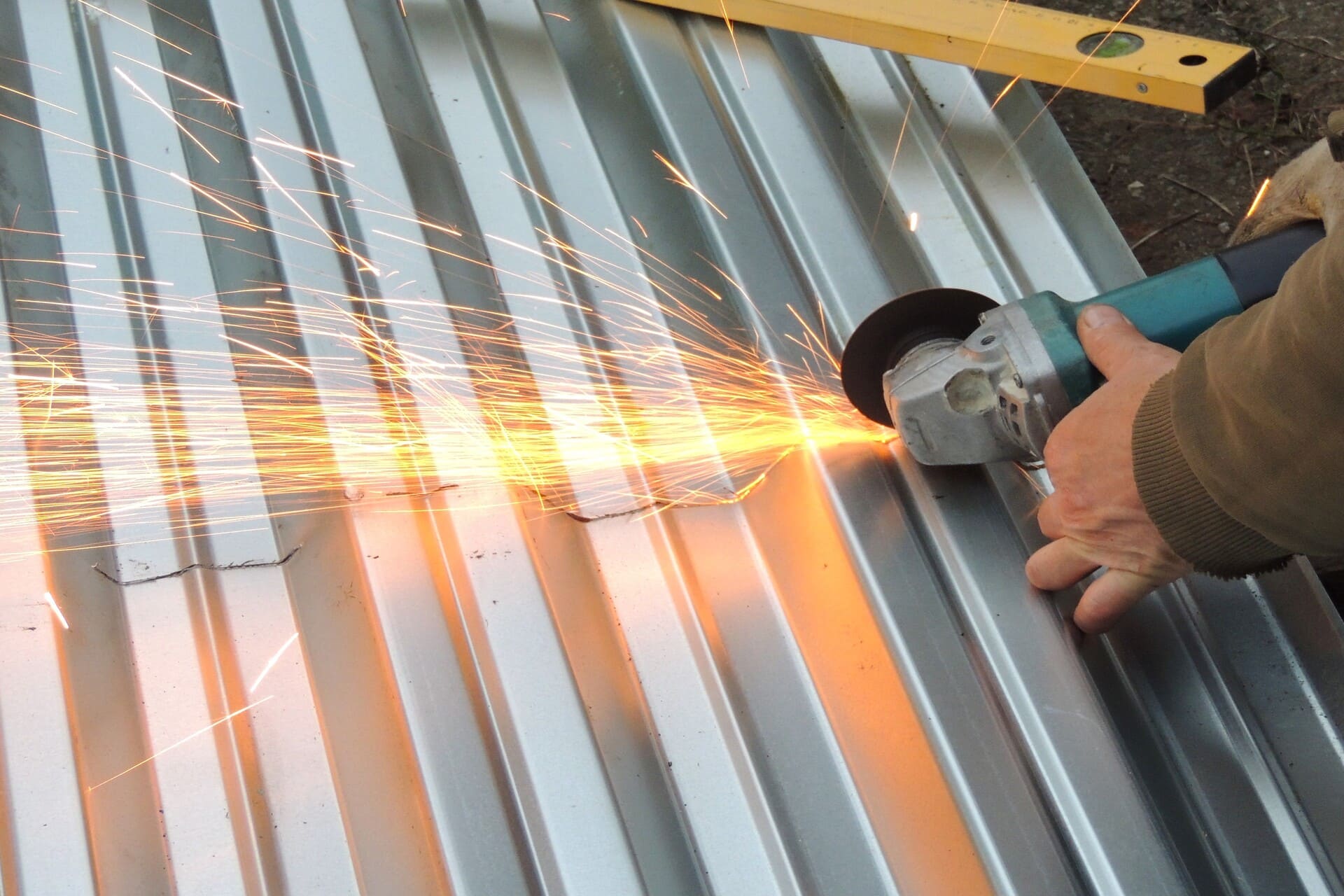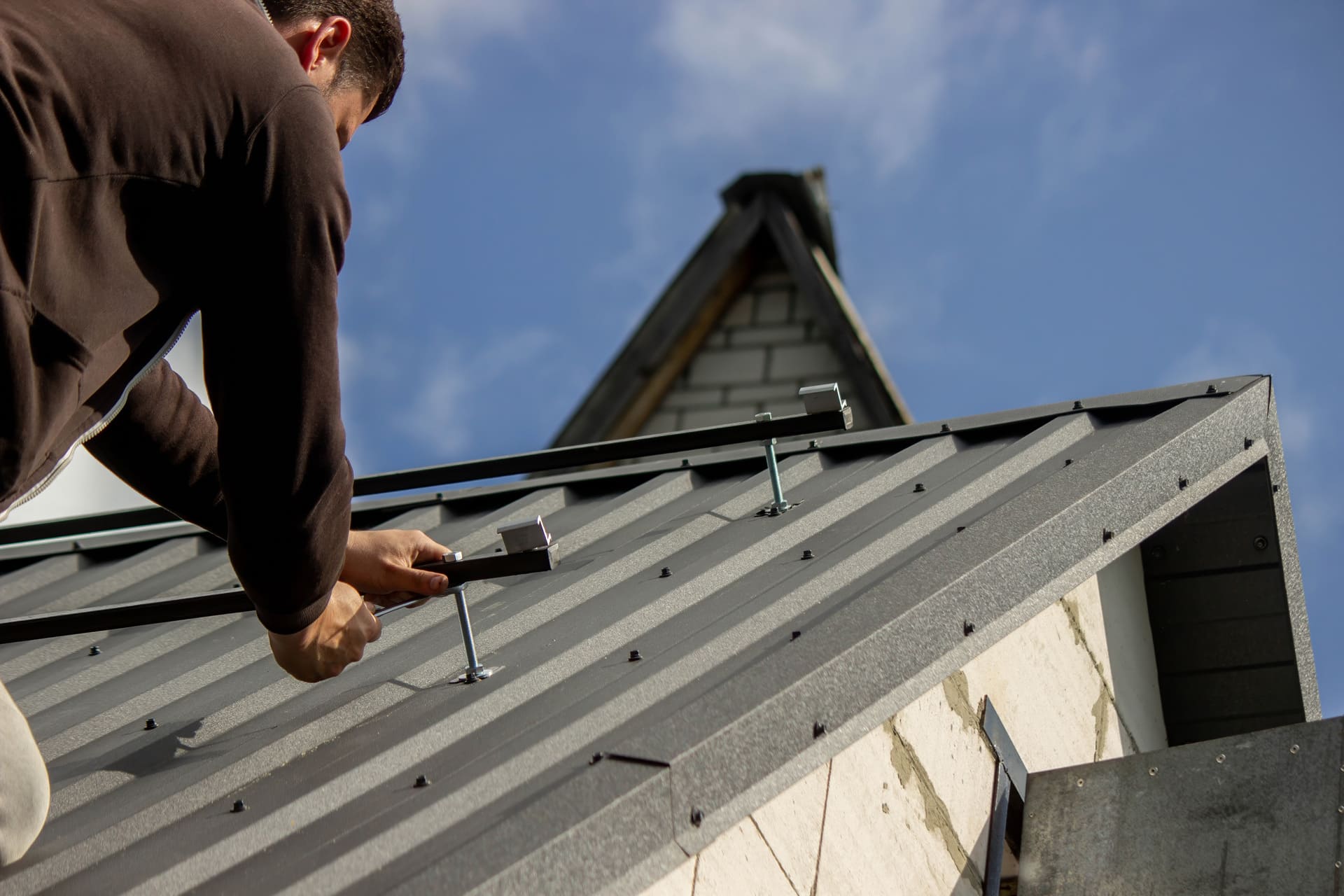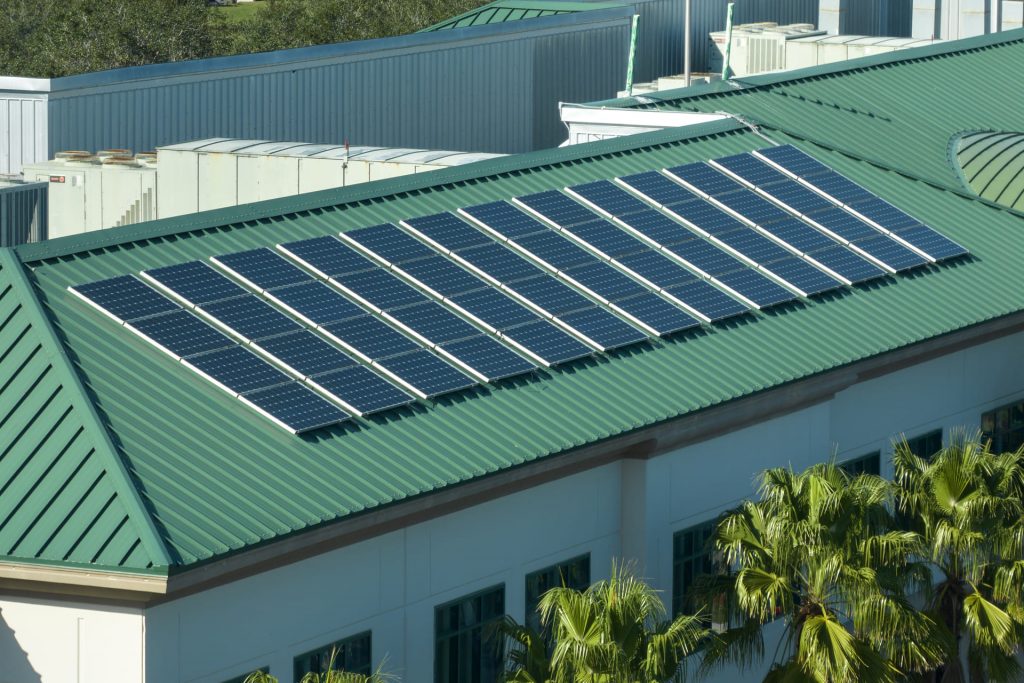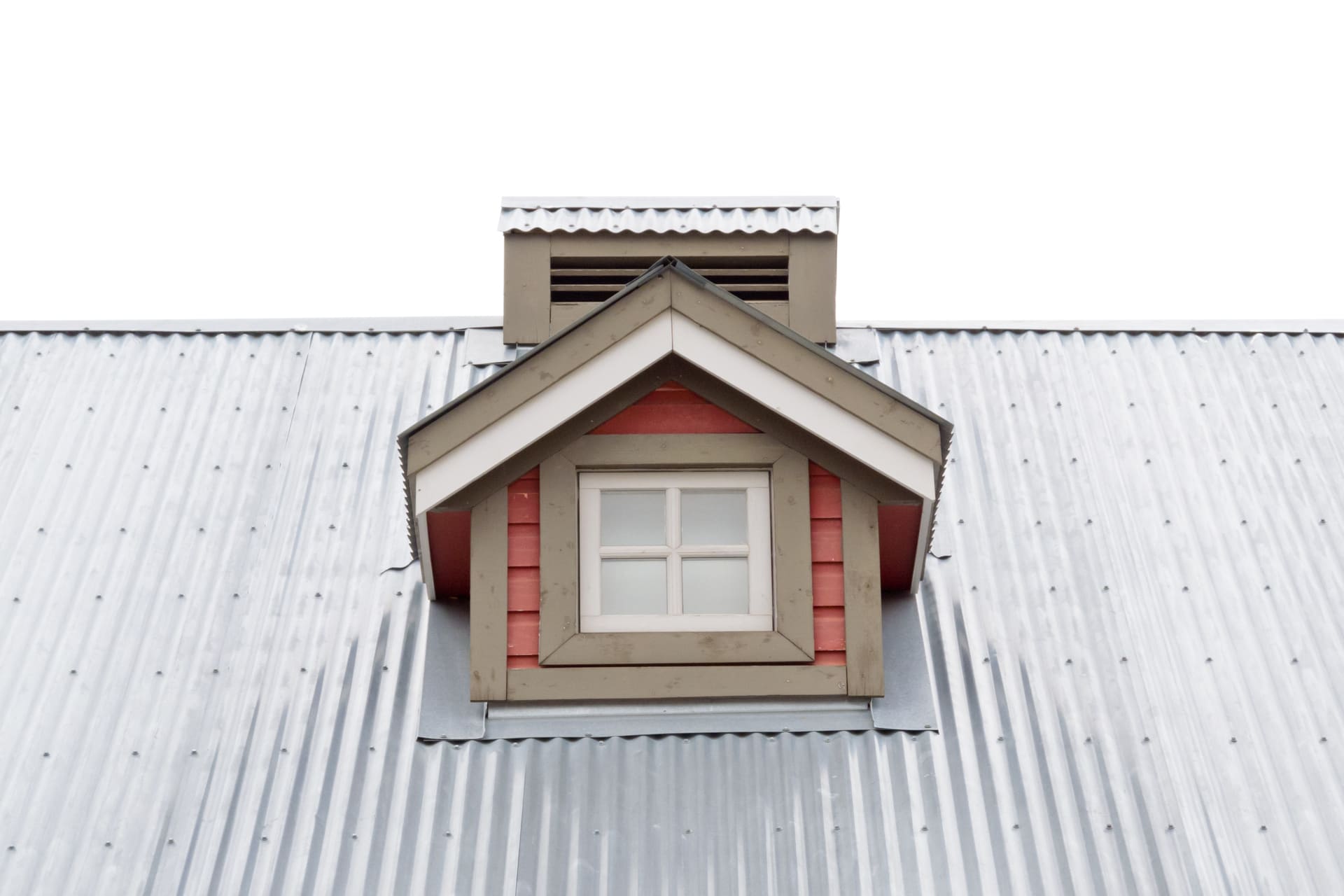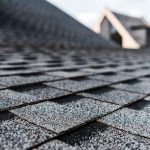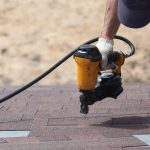
Metal roofing continues to grow in popularity across residential neighborhoods—and for good reason. The pros and cons of metal roof systems show clear benefits like energy efficiency, durability, and long-term value. But there are also real disadvantages, from upfront cost to sound and installation issues.
Below are the top advantages of metal roofing:
- Longevity
- Durability
- Energy efficiency
- Environmentally friendly
- Fire resistance
- Reflects heat
- Low maintenance
- Long lifespan
- Recyclable
- Lightweight
- Resistant to mold & mildew
- Increases resale value
- Performs well in extreme weather
- Can be installed over an existing roof
- Wide variety of styles & finishes
And here are the key drawbacks to consider:
- Expensive upfront cost
- Difficult installation
- Can dent from hail or falling debris
- Noisy during rain or hail (unless insulated)
- Expansion & contraction can loosen fasteners
- Slippery when wet (safety issue)
- Requires professional installation
- Limited contractors familiar with metal roofing
- Potential for color mismatch in repairs
- May interfere with Wi-Fi or cell signals
- Potential for rust or corrosion
- Not ideal for flat roofs
- Difficult to modify once installed
- Can be aesthetically “cold”
UPGRADE YOUR ROOF WITH CONFIDENCE
Prairie Exteriors delivers lasting protection, curb appeal, and peace of mind, right here in Wisconsin. Let’s make your roof one less thing to worry about.
What are the disadvantages of a metal roof?
So, what are the problems with metal roofs? Metal roofs are known for their strength, long lifespan, and sleek appearance, but they are not without drawbacks. From roof costs to aesthetics, several factors may make homeowners think twice.
Below is a breakdown of common disadvantages that come with installing a metal roof.
1. Expensive upfront cost
Metal roofs often come with a higher initial price tag than traditional materials like asphalt or slate. While a new roof made from metal may last longer, the upfront roof costs can be a challenge for homeowners with limited budgets or those planning to sell in the near term. The investment may not be ideal unless you plan to stay put long enough to recoup the value.
Although the initial investment is higher, metal roofing can actually save money over time due to its longevity and minimal maintenance needs. Homeowners may also benefit from energy efficiency gains and potential insurance discounts, helping to offset the upfront cost.
2. Difficult installation
Installing a metal roof is not a weekend project. It requires specialized tools, knowledge, and experience to properly align panels, secure fasteners, and allow for movement. Improper installation can reduce performance and void the product’s warranty, making it critical to hire qualified professionals.
Because installation is more complex, labor costs are typically higher compared to traditional roofing materials. Choosing an experienced installer ensures the roof performs as intended and prevents costly mistakes down the road.
Additional reading: do metal roofs leak more than shingles
3. Can dent from hail or falling debris
Although metal roofs are durable, some of the softer types of metal roofs, like aluminum, may dent when hit by hail or tree limbs. Dents may not affect waterproofing, but can reduce curb appeal, especially for homeowners who expect their roof to maintain a sleek, uniform look over time.
Steel roofing, especially with higher gauges, offers better resistance to dents but still isn’t completely immune. In regions prone to hailstorms, homeowners may want to consider impact-resistant materials or roofing styles that better conceal minor imperfections.
4. Noisy during rain or hail (unless insulated)
One common complaint about metal roofing is the sound of rain or hail hitting the surface. Without proper insulation, it can get loud, especially during storms or heavy downpours. While some homeowners enjoy the nostalgic sound, others find it disruptive, especially at night or in large, open homes.
The good news? Insulation makes all the difference. With the right materials installed beneath the panels, you can significantly reduce the noise and create a more peaceful indoor environment. Want to learn more about effective options? See our page on the types of insulation for metal roofs.
5. Expansion & contraction can loosen fasteners
Metal naturally expands and contracts with temperature changes. Over time, this movement can cause fasteners to back out or panels to shift. If not addressed, these gaps may lead to leaks and reduce the roof’s lifespan. This is particularly important in climates with hot summers and cold winters.
Modern metal roofing systems often include fastening solutions or floating panel designs that accommodate thermal movement. Regular inspections can help catch and correct any issues before they compromise the roof’s integrity.
6. Slippery when wet (safety issue)
When metal gets wet, it becomes slick—very slick. Walking on a metal roof after rain can be dangerous. This creates a real safety concern for maintenance or inspection. Fall protection and professional handling are always recommended.
The smooth surface of metal amplifies the risk, especially on steep pitches or during icy conditions. For this reason, many homeowners avoid DIY roof work and rely on professionals trained in proper safety procedures.
7. Requires professional installation
Metal roofs are not a DIY-friendly option. Proper installation requires knowledge of flashing, fastener spacing, ventilation, and underlayment. Mistakes can compromise performance or reduce energy efficiency. This need for skilled labor can raise roof costs compared to simpler materials.
Certified installers not only ensure proper technique but also help maintain manufacturer warranties that often require professional installation. Investing in expert labor upfront can prevent costly repairs or replacements later on.
8. Limited contractors familiar with metal roofing
Because metal roofing is still less common in some regions, not every roofing contractor is equipped to handle it. This can make it harder to find qualified help for installation or repairs. Homeowners may need to seek out specialists or pay more due to limited availability.
In rural or less populated areas, options may be especially limited, leading to longer wait times for service. It’s wise to vet contractors carefully and verify their experience specifically with metal roofing systems.
9. Potential for color mismatch in repairs
If a panel needs replacement down the line, matching the original color exactly can be difficult. Metal roof paint may fade over time, and even panels from the same manufacturer can have slight variations. This can be frustrating for homeowners who value a uniform appearance.
UV exposure, weathering, and aging can alter the appearance of metal finishes, making new panels stand out. To minimize contrast, some manufacturers offer touch-up kits or suggest replacing larger sections for a more seamless look.
10. May interfere with Wi-Fi or cell signals
Although metal roofs do not block signals completely, they can weaken wireless signals under certain conditions. This may require you to install signal boosters inside the home, especially in rural areas or older buildings with thick walls and limited connectivity.
The effect is usually minimal in modern homes with strong network infrastructure, but it can be noticeable in areas with already weak signals. Placing routers strategically or upgrading to mesh Wi-Fi systems often solves the issue effectively.
11. Potential for rust or corrosion
Although metal roofs offer superior durability, they are not immune to corrosion. Galvanized steel can rust over time, especially near coastal areas or where excessive moisture is present. Copper and aluminum resist rust better, but even those can develop patina or oxidize depending on exposure.
Protective coatings and proper installation techniques significantly reduce the risk of rust, even in harsh environments. Regular inspections and prompt maintenance can further extend the lifespan of the roof and preserve its appearance.
12. Not ideal for flat roofs
Metal roofs need a slope to properly shed water and prevent pooling. On flat or nearly flat roofs, water can accumulate and reduce longevity. This makes metal a less suitable choice for flat roof replacement unless combined with special designs or membranes.
Low-slope metal roofing systems do exist but often require additional waterproofing layers and expert installation. In many cases, alternatives like rubber or TPO membranes are more practical and cost-effective for flat roof applications.
13. Difficult to modify once installed
Once a metal roof is in place, making changes is not easy. Adding skylights, vents, or solar panels later requires professional help and may void the warranty. This inflexibility can be a downside for homeowners looking to renovate or adapt their roof layout down the line.
Cutting into metal roofing requires precision to avoid leaks or structural issues, which increases both time and labor costs. Planning all desired roof features before installation helps avoid complications and added expense later.
14. Can be aesthetically “cold”
While this may not be as much of a concern if you are looking for types of commercial metal roofing, some homeowners feel they lack the warmth or character of traditional asphalt shingles or natural materials like slate. A metal roof may not always suit the style of older homes or neighborhoods with a more classic look.
Metal roofing materials are efficient and energy-saving, but they are not perfect for everyone. Choosing based on the type of roof, local climate, and your goals can help determine if the benefits outweigh the downsides. While they are durable and often recyclable, metal roofs may receive criticism for sound, aesthetics, or high costs.
Still deciding if a metal roof is right for your home? Our team can walk you through the pros and cons based on your location, budget, and long-term goals to help you make a confident decision.
What are the benefits of a metal roof?
When it comes to protecting your home or business, metal roof benefits continue to stand out for both performance and long-term value. Whether you are choosing roofing for a new construction or a replacement, metal roofing offers advantages that go far beyond the surface.
1. Longevity
How long does a metal roof last? Often 40 to 70 years or longer. That’s two to three times the lifespan of asphalt shingles. For homeowners who want a roof that may never need to be replaced again, metal is one of the most lasting options available.
This extended lifespan makes metal roofing a smart investment, especially for those planning to stay in their home long-term. Fewer replacements mean less material waste, making it a more sustainable option as well.
2. Durability
Metal roofs resist cracking, shrinking, and breaking. They hold up under high winds, heavy snow, and hail. Compared to other roofing materials, metal offers superior performance in harsh environments and requires fewer repairs over time.
Many metal roofs are rated to withstand wind gusts up to 140 mph and are impact-resistant depending on the type of metal used. This makes them especially appealing in regions prone to storms, hurricanes, or extreme seasonal changes.
3. Energy efficiency
Metal reflects solar heat instead of absorbing it. This reduces cooling demands and can lower energy bills significantly. Homes with metal roofs often stay cooler in summer and more stable year-round, helping homeowners save money on energy costs.
Some metal roofs also come with specialized reflective coatings that enhance their thermal performance even further. Over time, these energy savings can add up, especially in hot climates with high air conditioning use.
4. Environmentally friendly
Many metal roofs are made from recycled materials and are 100% recyclable when replaced. This makes them an eco-conscious choice. You are not only protecting your home, you’re supporting a lower-waste building material that benefits the environment.
Unlike asphalt shingles, which often end up in landfills, old metal roofing can be reused or repurposed. Choosing metal helps reduce the environmental footprint of your home over its lifetime.
5. Fire resistance
Most metal roofs carry a Class A fire rating, the highest possible. Unlike wood or asphalt shingles, metal will not ignite due to embers or lightning strikes. That extra peace of mind is especially important in wildfire-prone areas.
Metal’s non-combustible surface can slow the spread of fire, giving firefighters and homeowners more time to respond. This added protection may also qualify homeowners for insurance discounts in high-risk zones.
6. Reflects heat
A metal roof reflects UV rays and radiant heat, helping reduce attic temperatures. This lowers stress on air conditioners and improves indoor comfort. It also contributes to long-term efficiency and can reduce cooling costs significantly.
Lighter-colored or specially coated metal roofs can enhance reflectivity even more, making them ideal for sunny or hot climates. This passive cooling effect reduces reliance on mechanical systems and supports energy-efficient home design.
7. Low maintenance
Metal roofing is low-maintenance by design. It does not rot, warp, or attract pests, and its panels resist corrosion. Occasional inspections and gutter cleaning are often enough to keep your roof in top shape for decades.
Unlike shingles that may crack or curl over time, metal panels retain their structure with minimal upkeep. This makes them a great option for homeowners who prefer long-term reliability with fewer service calls.
8. Long lifespan
Many homeowners install metal once and never need another roof. This long lifespan makes it ideal for those looking to avoid future roof replacement costs or who want peace of mind about long-term performance.
With proper installation and minimal maintenance, metal roofs can last 50 years or more without major issues. This durability also adds value to your home, which can be a selling point if you ever decide to move.
9. Recyclable
Steel, copper, aluminum, and other metals can be recycled into new materials when the roof reaches the end of its service life. Unlike asphalt shingles, which often go to landfills, metal supports sustainable building practices.
Choosing a recyclable roof helps reduce construction waste and supports a circular economy in the building industry. Many manufacturers also offer roofing products made with a high percentage of post-consumer recycled content.
10. Lightweight
Metal roofing is significantly lighter than tile or slate. That puts less stress on your home’s structure and can simplify installation, especially during a roof replacement. It also means less reinforcement is needed in most cases.
In retrofit projects, this lighter weight can eliminate the need to tear off the old roof, saving both time and labor costs. It also reduces structural strain, which is especially beneficial for older homes or buildings with weight limitations.
11. Resistant to mold & mildew
Metal doesn’t absorb water, making it resistant to mold, mildew, and algae growth. Homes in wet or shaded areas benefit from this quality, especially when compared to traditional shingles, which can trap moisture and degrade over time.
This resistance helps maintain the roof’s appearance and structural integrity over the long term. It also reduces the need for chemical treatments or frequent cleanings, making upkeep easier and more eco-friendly.
12. Increases resale value
A new metal roof can increase your home’s resale value. Buyers appreciate durability, efficiency, and peace of mind, making metal an appealing upgrade. It also serves as a strong listing feature when marketing your home.
Homes with metal roofing often sell faster and closer to the asking price due to the reduced likelihood of near-term repairs. The roof’s longevity and energy efficiency can be attractive selling points for budget-conscious or eco-minded buyers.
13. Performs well in extreme weather
From hailstorms to hurricanes, metal performs where other materials fail. It’s built to withstand high winds, heavy snow, and rapid temperature changes, making it ideal for climates with severe weather conditions.
Many metal roofs are impact-rated and engineered to shed snow quickly, reducing structural stress during winter storms. Their interlocking panels and secure fastening systems also help prevent wind uplift and water intrusion.
14. Can be installed over an existing roof
In some situations, a metal roof can be installed over an old shingle roof. This saves time, money, and landfill waste. However, always check with a professional to make sure your structure supports this method.
Installing over existing shingles also acts as an added insulation layer, improving energy efficiency. Just ensure local building codes allow it and that there’s no underlying damage before proceeding.
15. Wide variety of styles & finishes
Modern metal roofs come in a wide range of colors, textures, and profiles. Whether you want the look of slate, wood, or tile, there’s a style available. Both residential and commercial properties benefit from this flexibility in design.
This versatility allows homeowners to match their roof to almost any architectural style, from traditional to contemporary. Many finishes are also designed to resist fading and chalking, keeping the roof looking sharp for decades.
Contact us today for a free quote for your Wisconsin roof replacement
Bonus: Solar metal roofing pros and cons
Solar metal roofing combines energy efficiency with long-lasting protection, but it’s not for everyone. Below is a quick breakdown of its main advantages and drawbacks.
Pros:
- Integrates well with standing seam metal roofs
- Increases energy efficiency and reduces electricity bills
- Long lifespan with minimal maintenance
- Environmentally friendly and recyclable
- May qualify for tax credits or solar incentives
Cons:
- Higher upfront cost compared to asphalt + solar combo
- Installation requires experienced contractors
- Not compatible with all metal roof types
- Repairs can be more complex if issues arise
- Appearance may not suit every homeowner’s style
Is a metal roof worth it for you?
Before deciding if a metal roof is right for your home, let’s recap the pros and cons to weigh its long-term benefits against potential drawbacks:
| Benefits of Metal Roofing | Metal Roof Disadvantages |
| Longevity | Expensive upfront cost |
| Durability | Difficult installation |
| Energy efficiency | Can dent from hail or falling debris |
| Environmentally friendly | Noisy during rain or hail (unless insulated) |
| Fire resistance | Expansion & contraction may loosen fasteners |
| Reflects heat | Slippery when wet (Bon Jovi not included) |
| Low maintenance | Slippery surface can be a safety hazard |
| Long lifespan | Requires professional installation |
| Recyclable | Limited qualified contractors |
| Lightweight | Color mismatch possible with repairs |
| Resistant to mold & mildew | May interfere with Wi-Fi or signals |
| Increases resale value | Potential for rust or corrosion |
| Performs well in extreme weather | Not ideal for flat roofs |
| Can be installed over existing roof | Difficult to modify once installed |
| Variety of styles and finishes | Can appear too modern or “cold” for traditional homes |
Still unsure which type of metal roof is right for your home? As a trusted metal roofing company in Wisconsin, we help homeowners compare options, weigh costs, and choose materials that perform well in our climate. Contact us today to get expert advice for your roofing project.
Looking for a durable, energy-efficient metal roof in Dane County? Whether you’re upgrading your home or planning a replacement, our team brings expert craftsmanship and superior materials to every project.
YOUR TRUSTED PARTNER FOR ROOF REPLACEMENT
Upgrade to a durable asphalt roof with help from Prairie Exteriors. Built to protect your home.
Explore our local service areas below and learn more about our metal roof solutions:
- Middleton
- Portage
- Poynette
- Prairie Du Sac
- Reedsburg
Read our residential metal roof reviews
Excellent communication, quality work, and attention to detail. Our new metal roof looks incredible and has already helped with energy savings.
Highly recommend Prairie Exteriors. The team was professional, courteous, and completed the job ahead of schedule. We love the look of our metal roof!
I had been dreading a roof replacement, but this team made it easy. They answered every question, kept us informed, and the results speak for themselves.
Key takeaways on metal roofing pros and cons
Metal roofs offer long-term benefits for homeowners seeking a durable, low-maintenance, and energy-efficient option. While the higher initial cost can be a downside, they often last as long as 40 to 70 years, outperforming traditional asphalt shingles in lifespan and performance. The type of metal roof you choose—aluminum, steel, zinc, or copper—influences how it looks, what it costs, and how well it stands up to climate demands like heavy snow or severe weather conditions.
From reducing cooling costs to resisting fire, metal roofs reflect many of the qualities buyers want. Still, their performance depends on being properly installed and matched to your home’s environment. For homeowners who live in an area with hailstorms, coastal winds, or excessive moisture, metal roofing can be a smart upgrade—especially when aesthetics and curb appeal are part of the goal.
HIGH-QUALITY
ROOF REPLACEMENT
YOU CAN RELY ON
Choose Prairie Exteriors for durable, dependable asphalt roofing solutions designed to stand the test of time.
FAQs
Are metal roofs good?
Yes, metal roofs are considered a good roofing material due to their strength, longevity, and energy savings. Metal roofs offer superior durability when compared to other roofing materials, lasting up to 70 years with minimal upkeep. They also have a Class A fire rating and reflect heat, reducing energy bills.They perform especially well in areas with wind, thunderstorm activity, or coastal climates, where other materials might fail. Plus, metal roof systems come in a wide range of finishes and styles, helping homeowners balance function with aesthetics.
What is the biggest problem with metal roofs?
The biggest problem with metal roofs is their higher initial cost compared to traditional asphalt shingles. While these roofs are known for being durable and low-maintenance, the upfront price often surprises homeowners. Sound, denting, and climate-related expansion can also present challenges depending on the type of metal roof installed.If the roof is made from a softer metal like aluminum or copper, it may be more prone to dents from hail or falling branches. Poor installation can also lead to issues with shifting panels or leaks. Despite these concerns, metal roofing materials offer superior performance and resist wind and excessive moisture when properly installed.
Does a metal roof devalue a house?
A metal roof does not devalue a house. In many cases, it can increase resale value by improving energy efficiency, aesthetics, and protection. These roofs appeal to homeowners who want a modern upgrade that lasts as long or longer than traditional asphalt roofs and offers excellent weather resistance.Metal roofs come in a range of styles that suit different home designs and climates. In coastal climates, aluminum and copper resist salt corrosion. In snowy areas, steel roofing withstands heavy snow loads. The growing popularity of energy-efficient roofing material with a Class A fire rating makes new metal roof installation a smart long-term investment.

